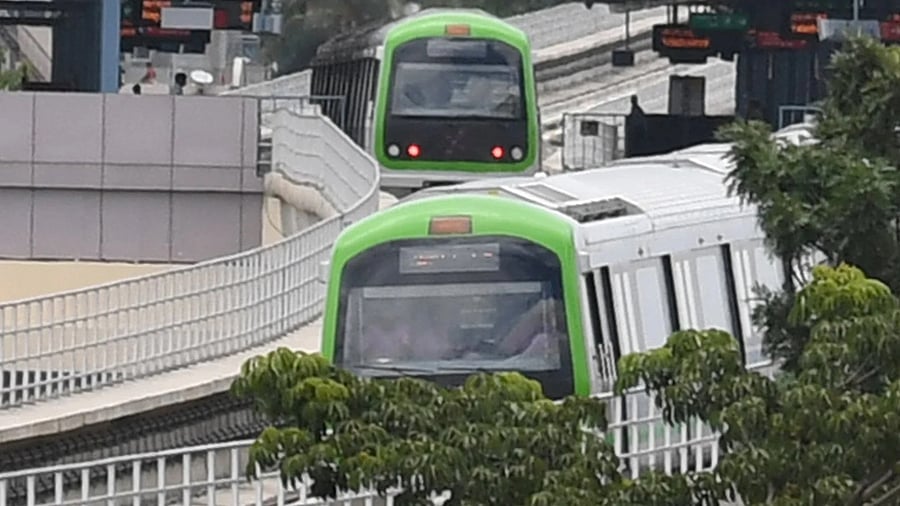
Representative image showing Namma Metro.
Credit: DH File Photo
The Karnataka government’s proposal to extend the Namma Metro network from Bengaluru’s Madavara to Tumakuru is impractical and fiscally reckless. District in-charge minister G Parameshwara has himself acknowledged that the project could cost an astronomical Rs 20,649 crore. Despite this, the Bangalore Metro Rail Corporation Limited (BMRCL) has been asked to prepare a Detailed Project Report (DPR) at Rs 3 crore. This is a wasteful distraction when the city and its surrounding regions urgently require more rational and cost-effective transport solutions. Metro systems are fundamentally designed for intra-urban mobility. Their core strength lies in frequent stops, rapid acceleration, and short-trip convenience within dense city limits. Extending this model across 60 kilometres to connect Bengaluru and Tumakuru makes little sense. Metro trains, with their closely spaced stations, average low speeds, and rolling stock optimised for standing passengers, are unsuitable for longer journeys. A long crawl in a metro coach between two cities is neither efficient nor comfortable.
The alternative is staring the government in the face. Bengaluru already sits on a busy railway corridor to Tumakuru, currently served by passenger trains and express services. With moderate upgrades in coordination with the central government, this line can easily deliver a high-frequency, high-capacity service. A train running at 100-160 km/h with limited stops could link Tumakuru to Bengaluru in under an hour. Crucially, such a system would be significantly cheaper while making optimal use of existing infrastructure. The government should focus on integrating such services into Bengaluru’s broader mobility network. It should also make full use of the services of Tumakuru MP V Somanna, who is also the Minister of State for Railways. A logical arrangement would be to run semi-high-speed trains terminating at the city’s main hub, the Krantiveera Sangolli Rayanna station, while also creating a multimodal transport hub at the last metro station on Tumakuru Road. This arrangement would ensure seamless transfers between intercity trains, the metro, and city bus services, maximising convenience for passengers without duplicating costs.
In contrast, the metro extension plan is riddled with uncertainties. The BMRCL itself has admitted that extending operations into rural areas would necessitate new legislation and compliance with multiple regulations. At a time when metro expansion within Bengaluru city limits is lagging, with commuters waiting for completion of delayed lines, there is no justification for diverting over Rs 20,000 crore towards a misapplied intercity metro. The government should instead channel its energies into a modern commuter rail system that meets the mobility needs of Tumakuru’s citizens.
